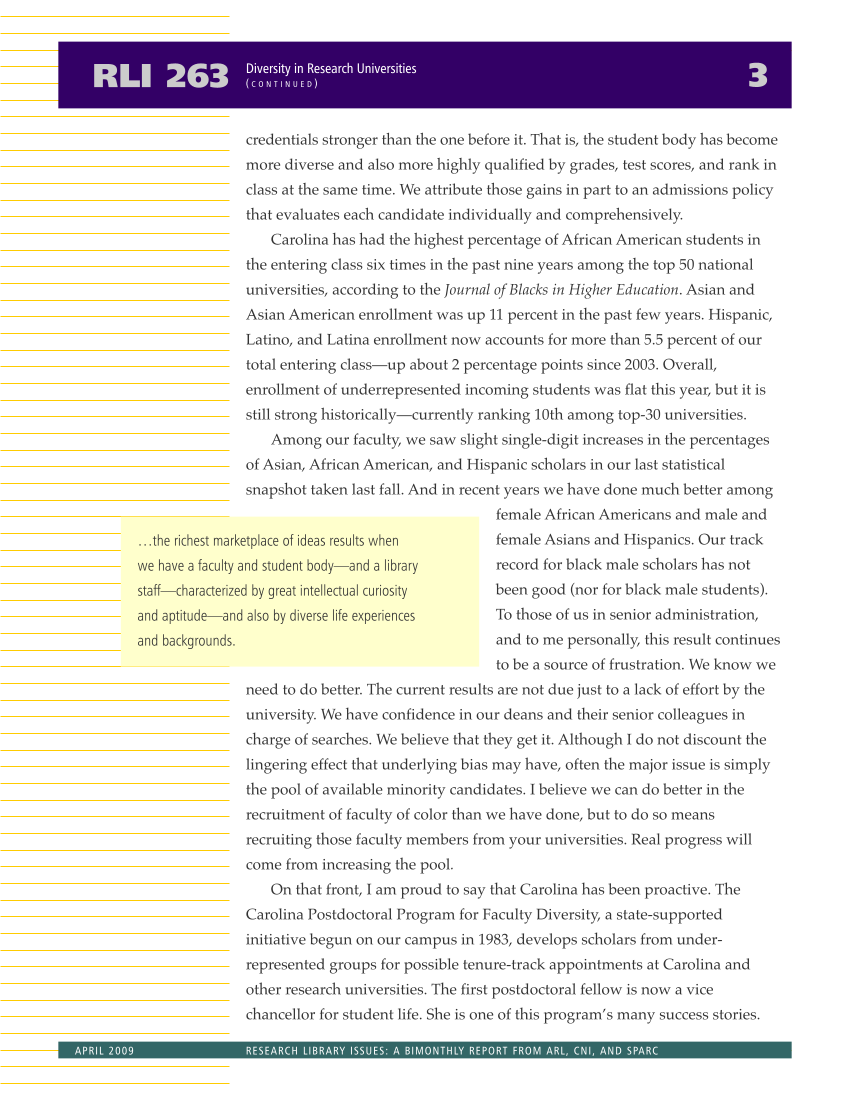credentials stronger than the one before it. That is, the student body has become more diverse and also more highly qualified by grades, test scores, and rank in class at the same time. We attribute those gains in part to an admissions policy that evaluates each candidate individually and comprehensively. Carolina has had the highest percentage of African American students in the entering class six times in the past nine years among the top 50 national universities, according to the Journal of Blacks in Higher Education. Asian and Asian American enrollment was up 11 percent in the past few years. Hispanic, Latino, and Latina enrollment now accounts for more than 5.5 percent of our total entering class—up about 2 percentage points since 2003. Overall, enrollment of underrepresented incoming students was flat this year, but it is still strong historically—currently ranking 10th among top-30 universities. Among our faculty, we saw slight single-digit increases in the percentages of Asian, African American, and Hispanic scholars in our last statistical snapshot taken last fall. And in recent years we have done much better among female African Americans and male and female Asians and Hispanics. Our track record for black male scholars has not been good (nor for black male students). To those of us in senior administration, and to me personally, this result continues to be a source of frustration. We know we need to do better. The current results are not due just to a lack of effort by the university. We have confidence in our deans and their senior colleagues in charge of searches. We believe that they get it. Although I do not discount the lingering effect that underlying bias may have, often the major issue is simply the pool of available minority candidates. I believe we can do better in the recruitment of faculty of color than we have done, but to do so means recruiting those faculty members from your universities. Real progress will come from increasing the pool. On that front, I am proud to say that Carolina has been proactive. The Carolina Postdoctoral Program for Faculty Diversity, a state-supported initiative begun on our campus in 1983, develops scholars from under- represented groups for possible tenure-track appointments at Carolina and other research universities. The first postdoctoral fellow is now a vice chancellor for student life. She is one of this program’s many success stories. RLI 263 3 Diversity in Research Universities ( C O N T I N U E D ) APRIL 2009 RESEARCH LIBRARY ISSUES: A BIMONTHLY REPORT FROM ARL, CNI, AND SPARC …the richest marketplace of ideas results when we have a faculty and student body—and a library staff—characterized by great intellectual curiosity and aptitude—and also by diverse life experiences and backgrounds.











































